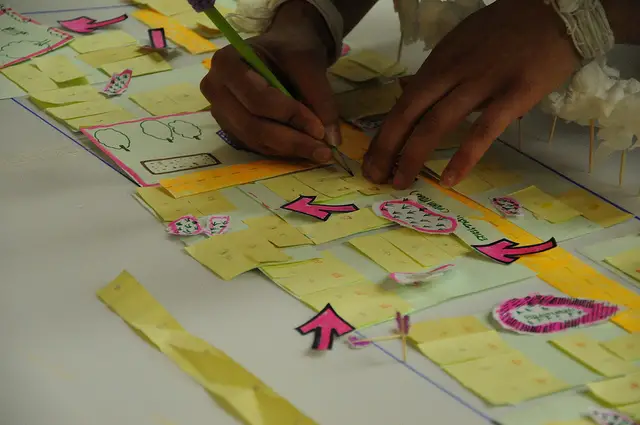Is Public Transport and Cycling the Transport Solution for Caracas?
Caracas, capital of Venezuela, lies in a narrow mountain valley surrounded by popular areas that define its hillsides. It is a crowded city with a population of more than 5 million, part of which lives in poorly connected barrios. Steep stairs, private jeeps, long walks and more than 4 hours journey are some of the facts inhabitants of these areas of the city have to face in their everyday routine.
Venezuela has the cheapest gasoline on the planet, which is the reason why approximately more than 1 million cars are driving every day in Caracas. As a result of this, the streets of the capital suffer from traffic congestion, pollution and noise. A 5 km trip can take literally hours of patience, where traffic lights, lane demarcations and street signals are completely ignored.
This city needs a cheap and well-connected public transport system outside of the private automobile. People need to appreciate the public rather than the private. In 2010, the Metrocable of San Agustín started working but has not reached yet its maximum capacity; local residents prefer sometimes go down the hill by foot instead of paying for a ride. Cable cars are still a source of controversy, and a case of that is happening in Rio de Janeiro, where the inhabitants of Morro da Providência are protesting against a new cable car system.
Earlier last year, a new piece of transport infrastructure arrived in Caracas: the Cabletren Bolivariano, an automated people mover on rail located in the biggest barrio of Latin America, Petare, in the east side of the city. This new system is running at the bottom of the hills, estimating to benefit up to 150,000 residents by offering them a connection to the public transport links. The cabletren of Petare is 2.4 km long and has at the moment 5 stations. It cost $400 million, meaning each kilometer cost $166 million. This is the reason why inhabitants of other areas are in complete discontent claiming that Metro of Caracas and the public transport system are still deficient.
Although Venezuelan institutions have made a huge effort to implement new ways of transportation and mobilization, the city still needs to raise awareness of the importance of public transport promote other alternatives.

The funicular of Petare’s Cabletren is seen as commuters travel in it at the slum district of Petare in Caracas August 21, 2013. The first stage of the Petare’s Cabletren funicular will start operations over 2.1 km (1.3 miles) with three stops through the slum districts of Petare with a capacity of 3,900 passengers per hour.
Caracas has for many years held a car-free, quick and cheap initiative called La Cota Mil, where a large stretch of a highway is closed to traffic between 5am and 1pm on Sundays. In its place, cyclists, runners, pedestrians and skate boarders take the street, transforming it into an open space that promotes clean transport, healthy living and closer communities. Improving bike-friendly transportation within our cities could therefore be interpreted from two different approaches; policy level and grassroots level.
Caracas is not yet adapted for cycling but little by little the creation of ciclovias, bike activities and renting equipment for cyclists is increasing. Going by bike is now a trend and some people now prefer to bike rather than drive by car. They want to feel the whole city, not just one portion.
Young movements have already started promoting those principles in Venezuela: Una Sampablera por Caracas is an urban collective whose aim is to create and support action and reflections around the city. They organize cycling tours for residents with the idea to look at the city with a different approach. Another interesting group is the one called Ciclo Guerrilla Urbana, born more than 2 years ago without any support from public or private institutions. Fortnightly, they teach at the BiciEscuela Urbana (Urban bicycle School) on how to cycle and behave while cycling around the city. Their lessons are free of charge and take place in a parking lot within the UCV (Central University of Venezuela). They are also promoting an urban night route on wheels every last Wednesday of each month.
The creation of ciclovias in Caracas has increased recently and little by little more cyclists who pedal experience a different journey. It is not only needed to promote the bicycle as an alternative method of transport but to experience the city through it.
Venezuelan cities are at a crucial time of transformation. Those who have the knowledge are responsible to communicate what they know and promote consciousness collectively, working together with the ones who have the power to build alternatives to reduce the use of private automobiles. A bike is smaller than a car, it doesn’t consume gasoline, it doesn’t contaminate and it is even healthier. It is possible to recycle, to reuse, to grow and build more friendly cities benefiting the whole population. People deserve better cities so they have the right to better lives.
Tere García Alcaraz is an architect and development practitioner from Barcelona, with research and working experience in Ecuador, Venezuela, Spain and the UK. She lives in London.
Photos: Reuters, Carlos Garcia Rawlins


